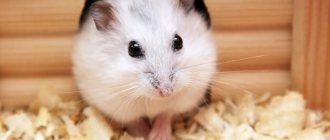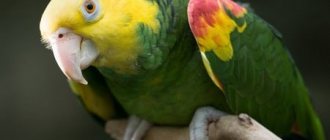Content Features
Sea rooster fish is in great demand due to the fact that it is quite unpretentious. This is one of the best options for people who are just starting to explore the world of aquarium keeping. There are reasons for this: the cockerel is not picky about water, does not require special aerating devices, gets along well with daylight and is undemanding when it comes to food and maintenance. Even a child can take care of him, however, like any other living creature, a betta requires proper attention. Only in this case, she will delight you for several years with her incredible iridescent color and the graceful “swish” of her delicate fins.
Even a small aquarium with a volume of 5-15 liters is suitable for keeping such a resident, but it is worth remembering that living in cramped conditions, the betta will not feel comfortable enough. In pet stores, these fish are sold in not very large glasses of fresh water, which is an indicator of their unpretentiousness. Beta fish can easily be transported.
Settled water and a suitable aquarium are the two most important conditions that must be met before placing a fish there.
Water
The betta fish does not like cold water. 24-28 degrees is the best temperature for betta fish to feel good. To do this, you need to get an aquarium heater. When the temperature drops, the betta fish hides in the thickets on the bottom, becomes lethargic, and at temperatures below 20 degrees it goes into hibernation. Cold can also cause illness. To control the water temperature, you should get a thermostat.
The water must be clean and fresh. You can use tap water that has been dechlorinated. To do this, it can be passed through a filter and left for about three days.
The use of aquarium chemicals is an optional condition for caring for betta fish. It is acceptable to use water conditioners, which will rid it of harmful substances, heavy metals and toxins. Biological additives will reduce fish waste, and a complex of microelements added to the water will be a useful means of caring for a valuable resident of your home pond.
Once a week, the water should be partially renewed - replenishing the evaporated water and replacing approximately 20% of the old liquid with new one.
Employees of the Singapore company for breeding exhibition Siamese fish Straits Aquarium recommend changing the water daily. This can only have a positive effect on your pet's health.
To control water quality, you can use testers that will show the pH level (optimal - 6.0 - 7.5), dH2 (12) and how suitable and clean the water is for supporting the life of betta fish.
There should be open areas without vegetation on the surface of the water so that the flow of atmospheric air is open to the fish.
Filter and aerator
If you change the water in the aquarium daily, you will not need a filter. If daily water replacement is not possible, even a small filter will do. When choosing it, it is important to take into account the fact that males do not like strong currents and do not swim well in it. Therefore, it is worth stopping at a copy with low power. When choosing a filter, you need to take into account the volume of the aquarium, the vegetation in it and the presence of inhabitants of other species. If the aquarium is not very voluminous, an airlift filter will do the job of filtration well - it is small, not very powerful, almost silent and aerates the water. The filter is also useful because it promotes water circulation and its uniform heating.
Find out about other aquarium fish that do not require special care.
Aeration of water is not necessary for betta splendens. This is due to the fact that the betta is a labyrinthine fish. In addition to gills, representatives of this family have a special organ, thanks to which they can breathe atmospheric air. They swallow it from the surface of the water.
An airlift filter will cope with the task of saturating the water with oxygen if it is a small aquarium and we are talking about a fish such as a betta.
Soil and decor
The betta, like other fish, should recreate the natural conditions in which it lives as much as possible. In addition to water at the right temperature, plants will help do this. In the shallow freshwater bodies of Southeast Asia, where bettas are common, there is a lot of vegetation. Therefore, the fish will feel more comfortable in the presence of organic matter, as in the wild. It is better to choose living rather than plastic plants, since thanks to them the biological balance is maintained in the home of tropical inhabitants. Artificial plants can also damage beautiful fins and tails.
Since labyrinths do not require a lot of lighting, it is worth choosing plants that are not demanding on light. Mosses, ferns, anubais, hornwort, which purifies water from nitrogenous compounds, and ambulia are suitable.
Shallow soil is suitable for vegetation. It is also good because the cockerels will not damage their fins and tail while they are at the bottom.
Decorative elements will not be superfluous - the fish will be able to hide. This is especially important if bettas are not the only inhabitants of the aquarium. The main thing is that the jewelry does not contain sharp parts or toxic substances.
Light
Betta fish do not need a lot of light. Natural lighting can be supplemented with a fluorescent lamp of the LB series (white light lamp) at the rate of -0.4 W per liter. On sunny days and in the presence of other light sources, the lamp should be turned on for a short time, and in low light, left for the whole day.
Some experts argue that bettas do not need light at all, but rather the aquarium vegetation will.
Is light needed in specific conditions, and if so, how much? You can tell by observing the pet’s behavior and health.
Caring for fry
A special aquarium with a volume of up to 20 liters is prepared for spawning. It is recommended to choose parents who are under one year old. The fish are isolated from each other for 2 weeks if they lived in the same aquarium. Particular attention should be paid to nutrition at this time. The water temperature in the aquarium should be 28 degrees, it is recommended to place plants (to cover the female). The female is placed in an aquarium with a male in a plastic bottle. He gets used to it and begins to build a nest of air bubbles. After two days, the female can be released. After the eggs appear, the female should be placed in a separate aquarium and the male should be left to move the eggs to the nest and take care of the offspring.
Small, millimeter-sized eggs, fertilized during spawning, soon turn into transparent fry.
You need to care for the fry especially delicately from the first days of life.
After the fry has swam, it is worth taking care of its nutrition. The fry eat ciliates, brine shrimp (just hatched), washed egg yolk. It is important to place food in small portions in the aquarium in order to determine how much the fry can eat, and also distribute it throughout the aquarium so that each fry can get to the food. Babies should always have enough food and they should always have access to it. To do this, it is enough to feed the fish 3 times a day. On the third day of feeding, the fry is already much larger in size. Aeration and filtration in an aquarium with fry is required to be minimal so that a bacterial film does not form on the surface of the water, as well as to ensure the presence of oxygen in the water before the development of the labyrinthine organ in the babies. If the water becomes cloudy and has an unpleasant odor, part of the water is drained, and the loss is replenished with water from the general aquarium.
“If there is very little debris at the bottom of the aquarium, you don’t have to remove it. There’s no point in disturbing the residents again.”
Having greenery in an aquarium with kids will be an advantage.
When the fry become similar to adults and the first signs of a fighting character appear, it’s time to sort them out.
Caring for the fry is not at all difficult, the main thing is to feed them enough and keep the water clean and at the right temperature.
What affects the lifespan of a fish?
First of all, life expectancy is affected by the cleanliness of the aquarium. It is also important to remember that bettas love space. There should be at least 3 liters of water per individual. The following factors also have a direct impact:
- Situation. Place pets only in a pre-prepared tank. Otherwise, they will only live a couple of days and simply die. Be sure to plant living plants, they will produce oxygen. If the fish are left without food, they will be able to snack on algae.
- Neighborhood. Pets will live longer if they have the right neighbors. Here we need to take into account the compatibility of phenotypes.
- Nutrition. Bettas will eat any food. Remember, nutrition should be varied and regular. Don't feed too much. This can lead to pet overeating or water contamination.
- Aquarium volume. These fish are incredibly active. They will feel uncomfortable in a small tank. The betta needs enough space to swim.
- Equipment. Be sure to place a filter and a heater in the aquarium. The water must be constantly clean and at the correct temperature.
- Water temperature. Cockerels are cold-blooded creatures. Water temperature has a direct impact on a pet's lifespan. The fish will feel good in water whose temperature ranges from + 26... + 29˚С.
- Refusal to spawn. Individuals are quite calm about their own offspring. However, the lack of spawning negatively affects their lifespan. It is necessary to select a pair in a timely manner and provide them with suitable conditions for reproduction.
- Selecting an aquarium fish. When selecting a pet, you need to pay special attention to its appearance and behavior. The individual must be quite active, beautiful, and energetic. The indicators indicate good health of the species.
What to feed
In order for the cockerel to feel good, not get sick and to be distinguished by the beauty of its color, it is important to pay special attention to its nutrition.
This doesn't mean it costs a lot to feed your fish. Against. In the wild, where bettas live, they are almost always in search of food. This need disappears in an aquarium environment, and the fish spends much less energy. That’s why you shouldn’t overfeed your pet, although in its feeding habits a cockerel resembles a cat or a dog – it will never refuse a tasty supplement. Overfeeding the fish is one of the causes of illness and lethargy, and in the worst case, the betta dies. A small but not very natural tubercle that swells on the pet’s abdomen indicates that the fish is often overfed.
“When buying food, you need to consider the size of the granules or flakes, it should not be very large.”
The betta is an omnivorous species. Fish eat both plant and animal foods with pleasure. However, this does not mean that it can be kept on a plant-based diet. The presence of protein in the diet is mandatory, although vegetation is an equally important element for maintaining the health of the handsome Siamese.
What should you do to choose a balanced diet for your fish? Many dry foods sold in pet stores are designed specifically for Betta splendens; they can be identified by the photo of this breed of fish on the packaging. Such food is created to maintain health and bright color. They are available in the form of granules and flakes.
Live food is also suitable for fish, as it is rich in protein. Cockerels eat it with pleasure, since they usually eat insects and crustaceans where they live in nature. It can be bought dry, frozen or fresh. Bloodworms, tubifex, brine shrimp, daphnia and worms seem to be the most attractive to bettas.
Advice: Preference should be given to frozen food, as it is disinfected, but at the same time retains most of its beneficial properties.
All you need to do to have plant food in the aquarium is to plant several plants in it, and the betta will regulate its vitamin intake. Although from time to time you can try feeding him with chopped lettuce.
Experts disagree on whether dry food alone is sufficient, or whether live food is also necessary. Why is it worth acting according to the situation? Because the best answer to this question is the pet’s appearance.
If it was decided to feed all types of food, it is worth giving them separately.
It is very important to pay attention to how much food to give at one time. It is recommended to break the food into several meals that the fish can eat at one time. The older the fish, the less often you need to feed it. The total amount of food should not exceed 5% of the pet's body weight.
Another recommendation is to give each type of food separately, at different meals. It would also be a good idea to remove uneaten food from the aquarium.
Vitamin complexes won't hurt, although you shouldn't overdo it with them either.
Cockerel fish: how long does it live?
The lifespan of a betta fish depends on age and health. You need to determine the condition before purchasing. Look at the conditions in which the fish are kept before purchasing. If the fish is in good conditions, eats well, behaves actively, has a bright color and fluffy fins, feel free to make a purchase. A lethargic fish with ruffled scales and a pale color is most likely sick. She will live a few days after purchase.
It is better to buy small, young individuals. The younger the fish, the easier it is for it to adapt to new conditions. How many years an individual will live depends on age. Young individuals are more resilient, they tolerate changes in housing more easily, and get sick less. You can identify a young individual by the size of its fins: young people have shorter fins and a shorter length.
Before purchasing, pay attention to the conditions in which the cockerel lives. Cloudy, polluted water is not suitable for bettas. Most likely, you will buy a sick individual with a weakened immune system who will not survive the move. You should only buy bettas if they are kept in clean tanks with live vegetation.
If you decide to breed cockerels, it is better to start purchasing with one individual. Buy one representative, place it in your home aquarium, and after a couple of weeks buy another fish. She is planted separately from the first cockerel. To do this, the tank is divided into two halves by a transparent partition. At first, you need to observe the interaction. If there is no aggression, the partition can be removed.
Lifespan
How long does a rooster fish live in an aquarium environment? This question cannot be answered unambiguously, since the genetics of all fish are different. Many fry do not develop after they begin to swim, move chaotically and die, while others grow successfully. Bettas live in aquariums from one to five years. If the temperature and diet are not observed, the cockerel dies quickly enough.
5 years is a difficult life expectancy to achieve. However, you need to strive for it. Experts recommend monitoring water and nutrition, not overfeeding pets, not housing them with other cockerels, but training them using a mirror placed in the aquarium. Spawning can also extend the life of a pet, so it is sometimes recommended to bring males and females together to produce offspring.
How to keep Petushki healthy
Fish as a species have common needs, but the Betta fish, also known as the Siamese fighting fish, is unique and requires even more special care.
Because they come in a variety of colors and are generally cheap, they make popular pets. But many people don't realize that they are making a commitment by choosing a Betta as a pet.
Life expectancy of Petushki
Betta fish live on average to 2-4 years. The lifespan of your betta fish is directly related to the environment in which you keep them. By keeping the tank clean and keeping an eye on their diet, you can help them live a longer life.
The role of the aquarium in the lifespan of fish
Betta fish are mostly available in pet stores in small vase-like jars that allow the plant roots to sink into the water. This is due to their aggressive, territorial nature. Separating your Betta fish is the best way to keep them healthy in the short term.
However, a small container is not enough for your betta to thrive. In fact, a betta fish requires at least 60 cubic centimeters of aquarium space to be healthy. The larger the tank, the better.
Make sure that the water for your Cockerels is clean, but not sterile. Fish need beneficial bacteria to grow in the water and keep them healthy. Live plants also contribute to good water quality. When you change the water in the tank, do only 10-15% at a time to ensure a fresh water supply without shocking your pet's body with sudden changes.
Who does he get along with?
By nature, the Siamese fish is very aggressive, but there are also representatives of the aquatic world with which it gets along.
You should not house two cockerels together - a fatal outcome is guaranteed. Two betta fish were specially placed in Asia, where betta tournaments were popular. It is because of these tournaments, similar to the fights between birds and roosters, that the fish got their name. A similar competition can be seen in the 2022 film Ultimate Fighting, in which prisoners in a Thai prison bet on one of two fish, and a similar scene can be seen in the 1963 James Bond film From Russia with Love, which shows a fight between three cockerels .
Oddly enough, keeping a male and female rooster fish together can also end in failure. The pair is reunited only during spawning. It is permissible to keep several females or two cockerels together only if the aquarium is large, there is a lot of vegetation, snags and decor in it, and the fish will have the opportunity to hide from aggressive individuals.
Cockerels do not get along with piranhas, acaras, telapias, black-striped cichlasomas, lineatuses, ctenopomas, julidochromis, tetraodons, melanochromis, and parrots.
Neighborhood with neons, guppies, danios, labeos, cardinals, angelfish, laliuses, ctenobricons, barbs and gouramis can provoke fights and damage to the fins.
When choosing neighbors for a cockerel, it is worth taking into account the requirements of all species for pH levels, filtration, aeration and the characteristics of their character. Cardinals and tetras are quite peaceful and get along well with bettas. Harlequin Pisces are 100% good cohabitants for fighters, since in the wild they also coexist. The difference in location preferences makes Corydoras catfish good neighbors, since catfish are usually based closer to the bottom, and bettas swim higher.
Keeping snails in a shared aquarium helps maintain cleanliness. There have been cases, however, when males attacked snails during spawning, when they are especially aggressive. Therefore, during this period of life it is worth keeping males separately, leaving them to fulfill their fatherly duty in peace in the spawning area.
Betta fish gets along well with shrimp.
You should not choose very bright neighbors, as cockerels react sharply to color competition. Fish with an aggressive nature, as well as small fish that can become victims of attack, are not suitable for the neighborhood. It is better to introduce Bettah Splendens into a community aquarium at a young age.
Male and female - differences
As a rule, it is the males that are sold in pet stores - the female rooster fish looks less impressive than her “husband”. You can distinguish them like this: the female is about 1 cm smaller, less colored, she does not have such large developing fins, and her abdomen is more round. The female's character is more docile, she is not aggressive and coexists quite calmly with other females. She tries to stay away from her aggressive partner and is peaceful towards him, which cannot be said about the male.
Main diseases and treatment
The cockerel, like other creatures, sometimes gets sick. The causes of diseases are different, as are their symptoms. The main indicator of health is the appearance of the rooster fish. If the color of the fish has faded and the betta lies on the bottom almost all the time, you should be concerned about finding out the reasons and treatment.
The beautiful fins of fish are susceptible to rot, which can be caused by bacteria entering the aquarium. Fin rot can be noticed in the first stages - it affects the fins and tail of the cockerel. This disease is fraught with loss of fins and tails, damage to muscles and blood vessels, and death. In the early stages, treatment consists of completely cleaning the aquarium, increasing the water temperature to spawning temperature, and changing the water more frequently. If simple measures are not enough, you should resort to special means with which you need to carry out baths. After completing the treatment, you should more carefully monitor the cleanliness of the aquarium, disinfect it and all decor with boiling water or a disinfectant solution.
Dropsy is another common disease of aquarium fish. If the cockerel often “lies” on the bottom, is lethargic, is a little bloated, eats little, and has sagging fins and slightly protruding scales, most likely he has developed dropsy. It can be triggered by stress: moving or eating disorder. Treatment of dropsy is exclusively medicinal and requires hand protection to prevent infection from getting into wounds and scratches.
Fish are also susceptible to fungal skin infections. There are several types of them, but they are all noticeable visually. For fungal diseases, malachite green oxalate, methylene blue, saline baths, and modern specialized drugs are usually used.
Oodiniosis and ichthyophthyriosis can also cause the death of a pet. These two diseases are side by side, since in the initial stages the symptoms are similar. Oodiniosis can be distinguished by the presence of so-called “golden” dust; the antibiotic bicillin-5 is recommended for its treatment. Ichthyophthiriasis is characterized by the presence of dermoid tubercles and strange behavior of fish, as if they are trying to scratch themselves. This disease is treated with salt, removal of pathogenic cysts and malachite greens.
Why does it lie at the bottom?
The fish lies on the bottom for several reasons: it is resting, the water temperature is not high enough and it is in “semi-hibernation”, it is sick.
Don't panic ahead of time. Siamese water inhabitants rest quite often.
It is worth checking the water parameters as well. Changes in its characteristics, pollution and especially a decrease in temperature greatly affect the behavior of the betta.
Lethargy is also the most common symptom of disease, so the fish should be carefully examined and appropriate treatment initiated if defects in the fins, scales, bloating of the abdomen and body lesions are discovered.
Why does the gills swell?
As in the case of lying on the bottom, the cockerel inflates its gills not only if it is sick.
This way the cockerel can tune in to the battle and show its power to the opponent. Inflating his gills, he shows off in front of the females so that they choose him to play the role of father.
If other symptoms become noticeable: lethargy, decreased appetite, damage to the scales, fins and tail, you should delve into the study of symptoms and begin treatment.
Jumped out of an aquarium, what should I do?
A betta jumping out of an aquarium is not uncommon. This happens due to the active nature of the fish, which may not have liked the quality of the water, the aquarium is too small, or it was afraid of one of the more aggressive neighbors. This can also happen due to diseases that provoke the fish to scratch itself and it jumps up.
If the fish jumps out and is alive, you need to immediately place it back into the aquarium with a damp cloth.
If the betta has spent a lot of time without water and is slightly damaged, then it is worth adding stress coat to the aquarium water, which restores damaged tissue.
It is necessary to lower the water level, take care of the lid and begin treatment if this situation was caused by illness, so that the fish does not jump out again.
Signs of diseases of Cockerels
Signs of possible illness include:
- They are disoriented
- Swimming in a strange pattern or upside down
- They don't eat
- White spots on scales or gills
- Bleaching
- Trouble breathing, as indicated by being on the surface of the water.
- Bulging eyes
- Mucus appears on the body
- Friction on hard surfaces
- Isolation from other fish
- Ulcers
- Bloating
- Change in shape, size or appearance
If you have any concerns about the health of your fish, please consult your veterinarian. Diseases that may affect the Betta include:
- Physical trauma
- Parasites
- Bacterial infections
- Fungal infection
- Fish pox (warty growths) caused by the fish herpes virus.
- Ammonia or chlorine poisoning due to poor water quality
Kinds
Bettah splendens are the result of selection and exhibitors, whether blue, red or multi-colored roosters. There are many species of them.
By type of tail there are:
- Crescent-tailed cockerels
- Crown-tailed
- Veiled
- Two-Tails
- Deltatails
- Poster
- Dumbo
- Royal
- Speartails
- Flagtails
- Brushtails
By color they are:
- Single color (white, red, blue, light blue, black)
- Bicolor
- Cambodian (with a sharp contrast in the color of the body and fins)
- Butterfly color
- Marble
- Piebald
- With mask color
- Multicolor
- Draconian
Dragon and royal bettas are often classified as a separate group due to their large size.
Fighting
In the scientific name Betta splendens, the word betta translates to "warrior". As a result of selection, these little wars became incredibly beautiful, but they borrowed their fighting character from their ancestors, whom the Siamese noticed and began to call “biting fish.”
It is no longer customary to organize fighting matches between these aggressive individuals, but this phenomenon still exists informally. In the 21st century, competitions of a different type are organized between individuals - beauty contests.
This character of fighting fish is associated with the struggle for territory; they fight for it even with females; this cannot be corrected in any way.
King Rama the Third began to develop the fighting industry in Thailand. Thanks to him, cockerels gained popularity and began to be selected to produce especially aggressive, valuable and beautiful varieties.
Black Sea
The Black Sea rooster, also known as trigla, is a ray-finned fish with a body length of about 60 centimeters. It belongs to the triglyceae family, while Betta splendens belongs to the macropod family.
In the photo this rooster seems quite massive and a little menacing. This is a predator that lives in sea sand glades. It has large beautiful fins that shimmer in different colors: blue, red, green, light blue. The trigla's large mouth makes hunting easier. Fishermen have noticed the ability of the Black Sea cockerel to jump out of the water.
Gold
The golden color is quite rare for betta fish. Much more often you can find red rooster fish, blue and blue ones. And if you want to admire the golden shimmer of the scales, you should contact the breeders or get a goldfish. The golden cockerel is one of the most expensive varieties of this fish.
Betta
Among betta fish, not all are fighters, although the word betta is translated as “warrior”. There is the black cockerel, also known as Betta imbellis, and Betta smaragdina - the mekong or emerald green betta, which reaches 7 centimeters in size. The surprising thing is that all bettas can interbreed with each other, despite different approaches to raising young animals - the emerald betta does not build nests, preferring its own mouth for bearing future babies.
Living in the wild
Southeast Asia is the homeland of betta fish, namely the Mekong basin in Thailand, Cambodia and Vietnam. The highest concentration is found in the Chao Phraya River in Thailand. On 5 February 2022, the Thai Council of Ministers confirmed that the "Siamese fighting fish" is the national aquatic animal of Thailand. Fish live in fresh water bodies, in streams and rivers with small currents, in swamps and even in rice fields. Very often the water in these reservoirs is cloudy, but this does not bother the fish at all, due to the presence of a special labyrinthine organ.
There is an opinion that males behave less aggressively in their natural habitat, but this fact has not been proven.
Caring for fry
The fry grow quickly and do not require much effort, you just need to follow some recommendations:
- in the first days, feed brine shrimp or ciliates.
- after 7 days you can already give specialized granulated food for fry or finely chopped tubifex;
- replace ¾ of the water in the aquarium daily;
- in 2-3 weeks it is advisable to sort large individuals from smaller ones;
- At the age of 4 weeks, the fry are transferred to a large aquarium.
Price
Since there are many types of Siamese fighters, their prices differ. Simple crown-tailed and veiled-tailed specimens can be purchased for 190 rubles, although you can also find breeders who are willing to give the fish away for free. A female will cost even less - 130 rubles. Superdelta and elephant ear are more expensive - about 400-500 rubles. The cost of a cockerel with a crescent tail and a Cambodian dragon is 900-1000 rubles. Butterfly cockerel – 2000 rubles. Prices depend on the beauty and age of the fish. The more beautiful and rare the fish, the higher its price.
The most expensive specimen of a Siamese fighting fish was sold for $1,700 at an auction held on November 15, 2016.
She stood out because her color repeated the colors of the Thai flag - white, blue and red horizontal stripes. Other high-priced cases included a fancy copper white and red Betta that sold for $747, a white platinum dragon that sold for $680 and a Crescent Betta King Gold Dragon that sold for $570. The last two fish are distinguished by their uniform, delicate color and huge flowing fins.
Varieties
The betta fish was first selected in 1910, giving it a colored color. Today there are more than 10 species of betta. They differ from each other in color:
- plain (red, yellow, white, black, blue, turquoise, purple);
- two-color (the color of the fins differs from the body color);
- multicolor (marble color, butterfly, dragon).
And also by the type of fins.
| Betta Over Halfmoon |
Betta crowntail |
| Short-tailed cockerel (Betta Plakat) |
| Veiltail cockerel (Betta Veiltail) |
| Delta-tailed Betta (Betta Super Delta) |
Betta Double Tail |
| Elephant-eared cockerel (Dumbo) (Betta Dumbo) |











